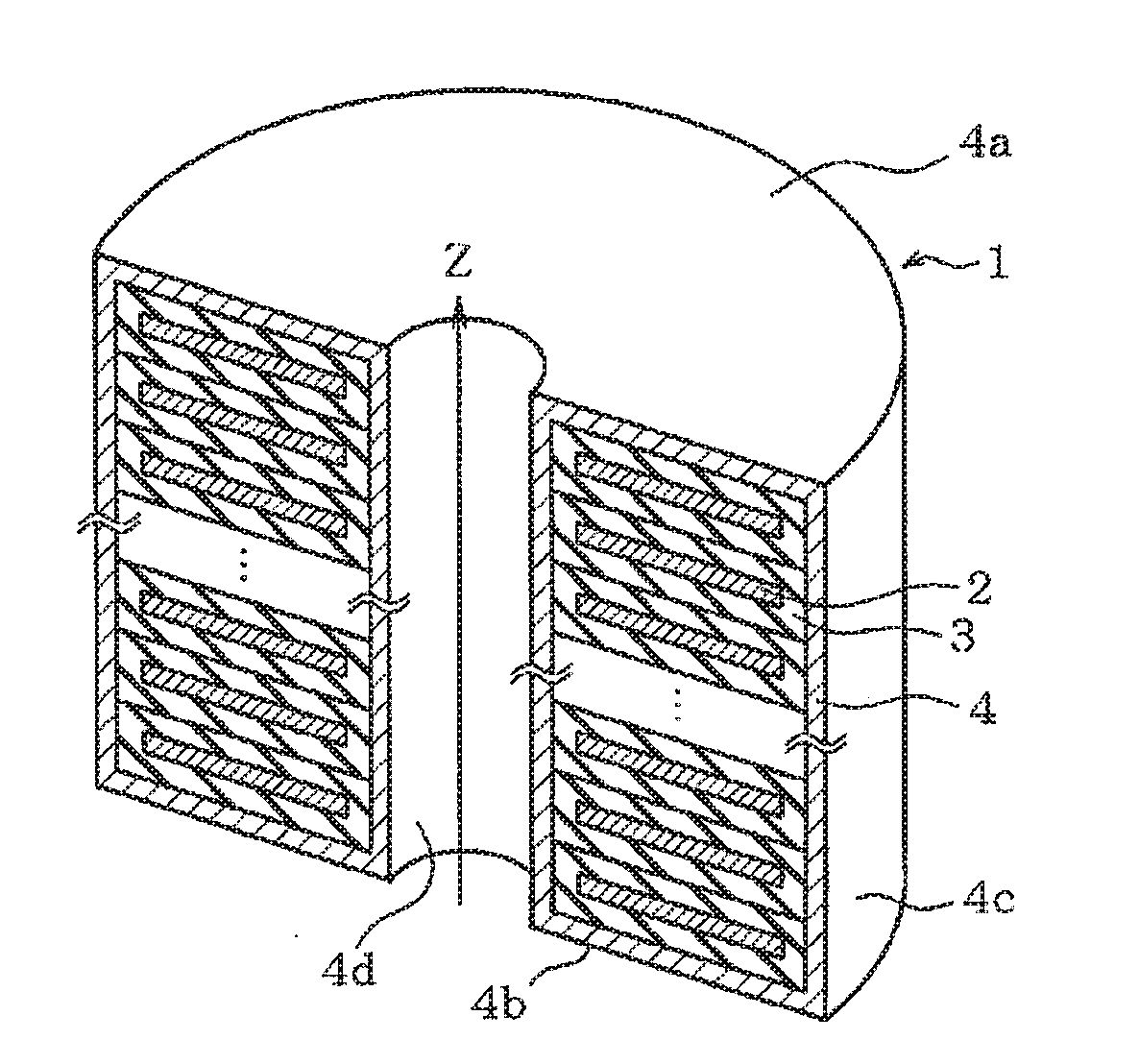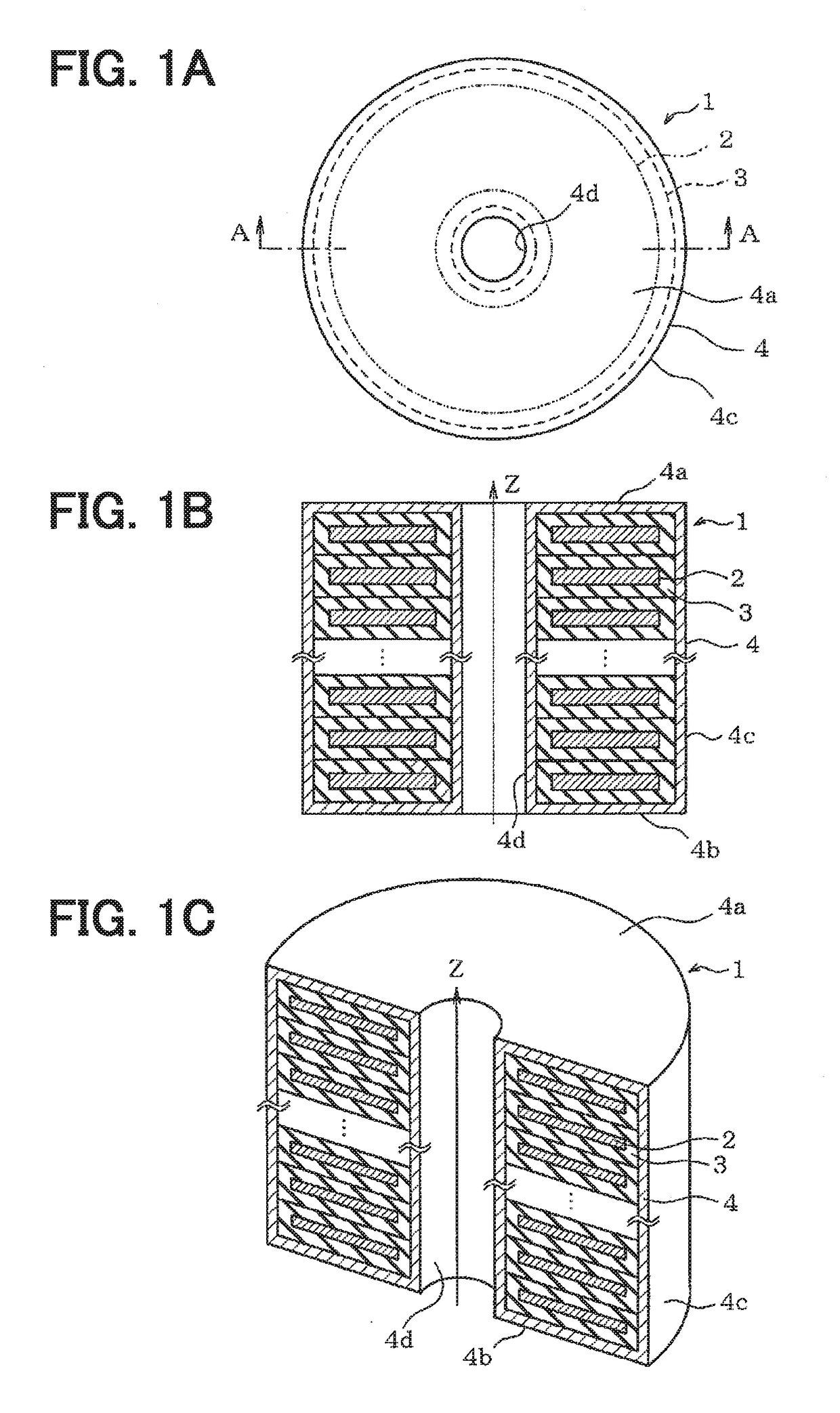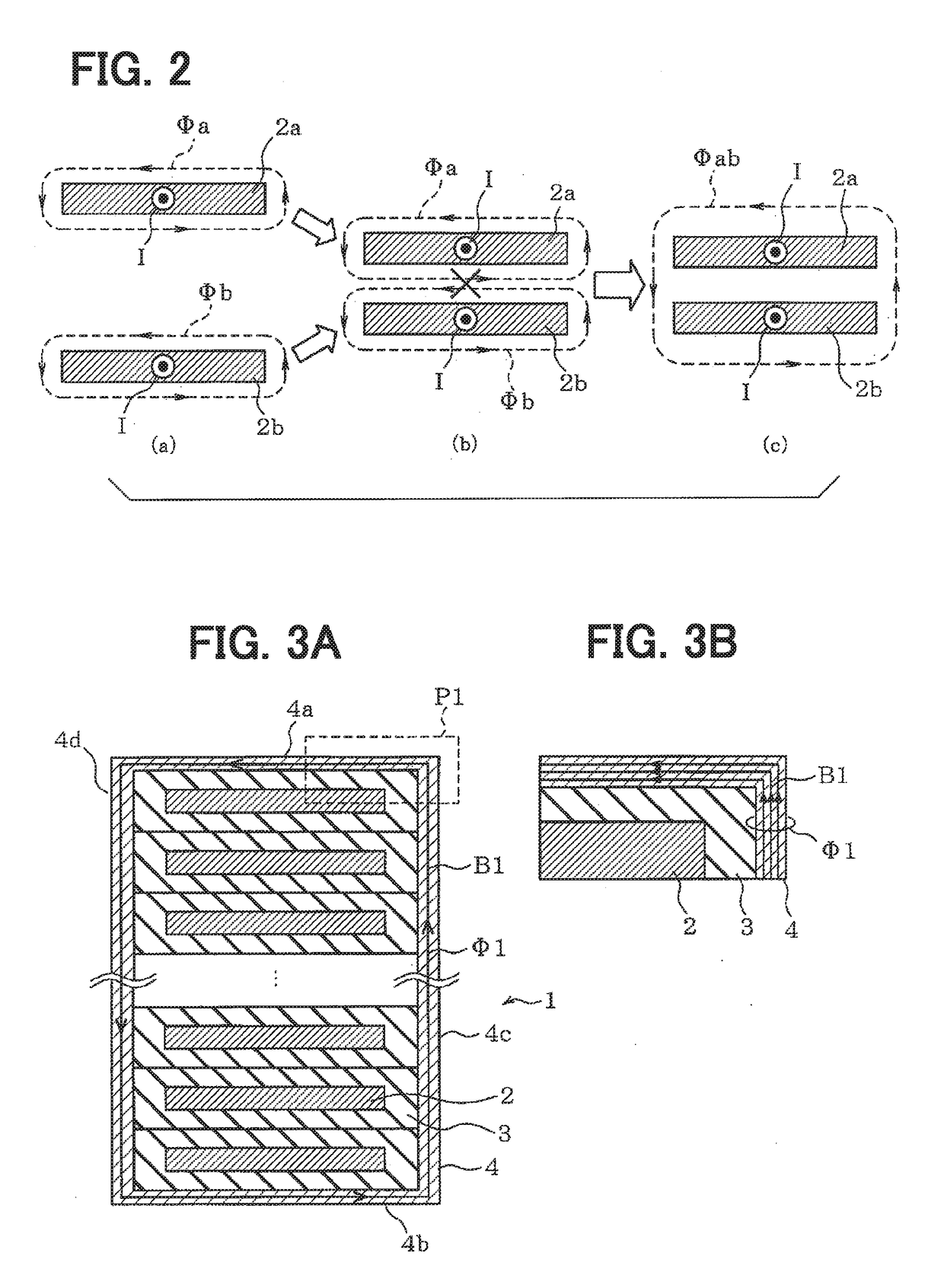Magnetic circuit component
a technology of magnetic circuit and component, applied in the direction of coils, transformers/inductance details, inorganic material magnetism, etc., can solve the problems of significant deterioration in the efficiency of switching power supply, increase in the alternating current resistance of coils, loss generation, etc., to reduce the density of magnetic flux, reduce the quantity of magnetic materials, and reduce the effect of eddy current loss
- Summary
- Abstract
- Description
- Claims
- Application Information
AI Technical Summary
Benefits of technology
Problems solved by technology
Method used
Image
Examples
first embodiment
[0049]A first embodiment is explained hereunder in reference to FIGS. 1A to 3B. FIGS. 1A to 1C illustrate a whole configuration and an outer appearance of a coil 1 incorporated in a reactor or a transformer. FIG. 1A is a plan view of the coil 1 viewed from the top side and FIG. 1B is a sectional view taken on line A-A in FIG. 1A. Then FIG. 1C is an external perspective view in a cut state.
[0050]The coil 1 is configured by winding a rectangular conductor 2 having a cross section of a flat rectangle and the surface of the conductor 2 as a winding wire is covered with an insulation film 3. The insulation film 3 has an identical thickness as a whole and has a thickness in the range of 10 to 100 μm for example. The coil 1 is formed in the state of winding the conductor 2 around an axis z and stacking the flat faces in the direction of the axis z. The conductor 2 in the coil 1 is in the state of being partitioned by the insulation film 3 between vertically adjacent two conductors 2. Magne...
second embodiment
[0066]FIGS. 4A to 5C illustrate a second embodiment. In the embodiment, a coil 11 is configured to have a magnetic material section 14 (14a and 14b): split so as to expose parts of an insulation film 13 over the surface of a wound conductor 12; and arranged in place of the magnetic material section 4 according to the first embodiment.
[0067]As illustrated in FIGS. 4A to 4C, a coil 11 is formed by winding a conductor 12 covered with an insulation film 13 similarly to the first embodiment. A cap-shaped magnetic material section 14a covering a top face and parts of an outside face and an inside face is installed and a cap-shaped magnetic material section 14b covering a bottom face and parts of an outside face and an inside face is installed, those faces constituting the surface of the coil 11. More specifically, the magnetic material sections 14a and 14b are installed at the parts corresponding to the start and the end of the winding of the conductor 12 in the coil 11 respectively. The ...
third embodiment
[0080]FIGS. 6A to 7B illustrate a third embodiment. In the embodiment, a coil 21 is configured to have a magnetic material section 24 (24a to 24d) split into four sections so as to expose parts of the surface of an insulation film 23 over a wound conductor 22 and arranged.
[0081]As illustrated in FIGS. 6A to 6C, a coil 21 is formed by winding a conductor 22 covered with an insulation film 23 similarly to the first embodiment. A magnetic material section 24a covering upper outside-and-top faces, a magnetic material section 24b covering lower outside-and-bottom faces, a magnetic material section 24c covering upper inside-and-top faces, and a magnetic material section 24d covering lower inside-and-bottom faces, those faces constituting the surface of the coil 21, are installed respectively. The magnetic material sections 24a to 24d are formed by attaching tabular magnetic materials comprising a soft magnetic material to the coil 21 respectively. The thicknesses of the magnetic material ...
PUM
| Property | Measurement | Unit |
|---|---|---|
| thickness | aaaaa | aaaaa |
| thickness | aaaaa | aaaaa |
| thicknesses | aaaaa | aaaaa |
Abstract
Description
Claims
Application Information
 Login to View More
Login to View More - R&D
- Intellectual Property
- Life Sciences
- Materials
- Tech Scout
- Unparalleled Data Quality
- Higher Quality Content
- 60% Fewer Hallucinations
Browse by: Latest US Patents, China's latest patents, Technical Efficacy Thesaurus, Application Domain, Technology Topic, Popular Technical Reports.
© 2025 PatSnap. All rights reserved.Legal|Privacy policy|Modern Slavery Act Transparency Statement|Sitemap|About US| Contact US: help@patsnap.com



